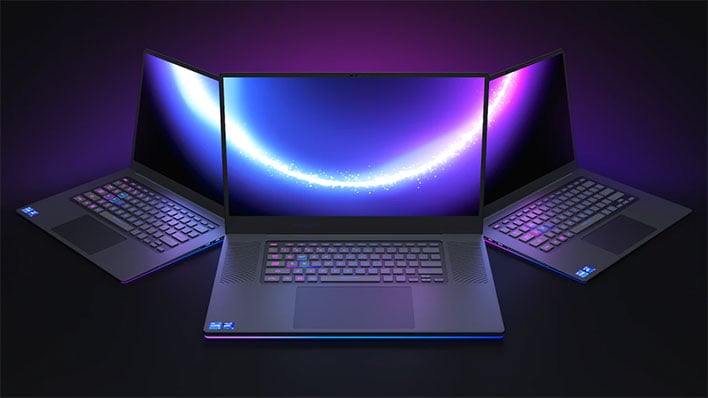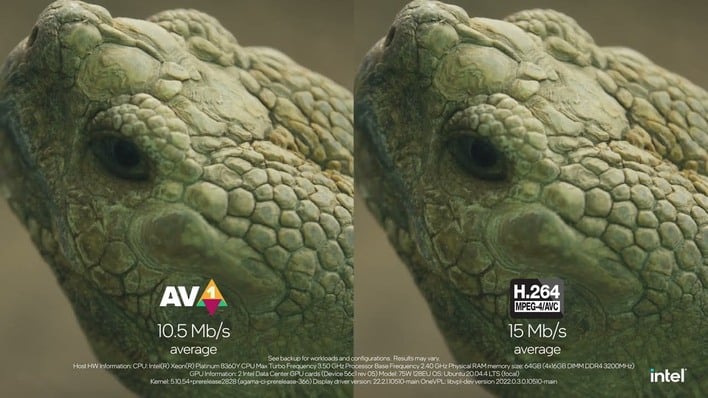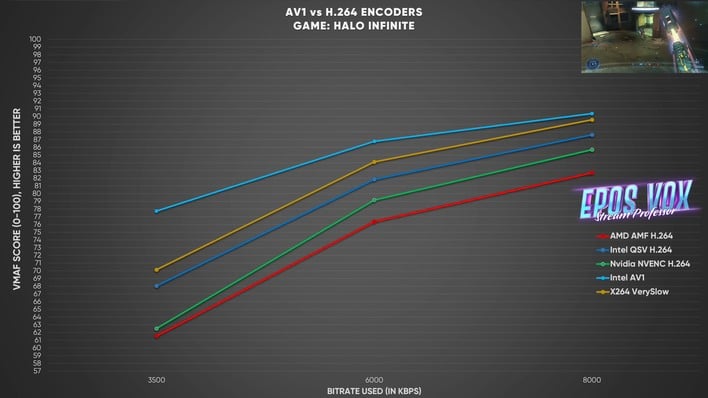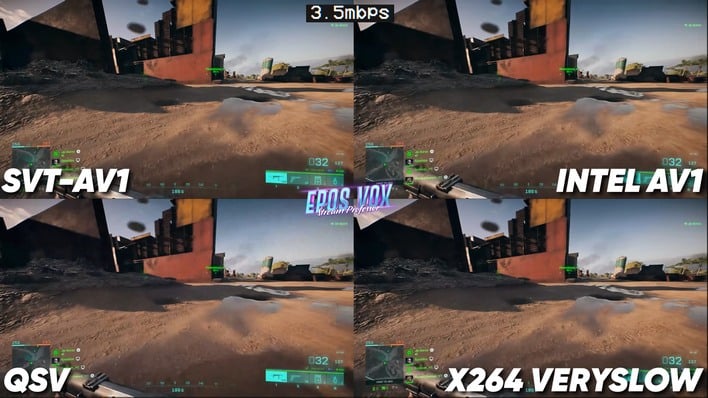Intel's AV1 Encoder Is An Ace For Arc In Game Streaming Versus NVIDIA And AMD

In reality, given that you're almost-assuredly not using the highest-quality presets for x264, the difference is probably pretty small. Certainly, the difference between x264 and a hardware AVC encoder is much smaller than the difference between AVC itself and the free-and-open-source AV1 codec. AV1 is a next-generation video codec that provides improved compression ratios compared to H.264 and even H.265. That means superior video quality at the same bitrate.
YouTuber EposVox, the self-described "Stream Professor," has done a great many videos dissecting the differences between video encoders and their settings. If you're an aspiring livestreamer, you would do well to check out his content, but particularly this latest video, where he got ahold of a Gunnir Arc A380 Photon card and tested Intel's AV1 encoder.
For folks who don't feel like finishing the 16-minute video, we'll lay it out for you: In EposVox's testing, at higher bitrates like 6 Mbps and 8 Mbps, the Intel AV1 encoder in the Arc A380 produces similar quality to x264 in its "veryslow" preset. That's impressive, as x264 has had a decade of optimizations and tweaks while Arc is a brand-new product with self-admitted unripe drivers. The "veryslow" preset for x264 is too demanding for almost any PC to do in real-time, so this is pretty much a straight win for Intel.
These results are encouraging for Arc, as the AV1 codec is a real step up over the older H.264 and even the H.265 HEVC format. However, you may recall that we mentioned there are two reasons that nobody's using AV1 for livestreaming. The second reason is because there are no websites that support ingestion of AV1 video in real-time. In other words, even if you can encode it quickly, you can't use it for livestreaming.
Besides, it's not likely to be much longer before someone figures out a way to use AV1 for livestreaming. The benefits, particularly at low bitrates, are too big to ignore for long. We expect AMD and NVIDIA to have AV1 encoding integrated in their GPUs sooner than later, but this is still a win for Arc in the interim.




